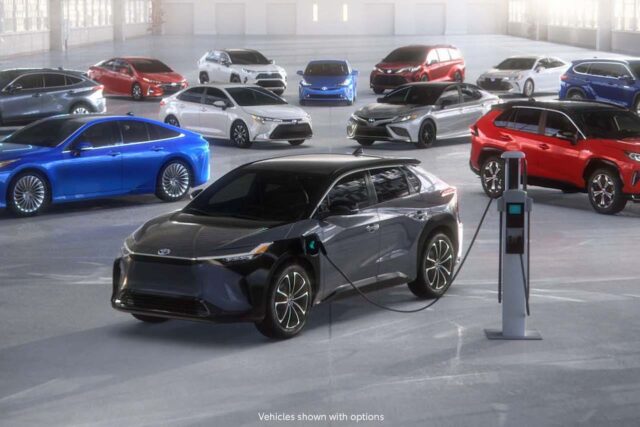Unraveling the Intricacies: The Components that Power Electric Vehicles in 2023
Introduction: Have you ever wondered what makes electric cars so fascinating and different from their gasoline-powered counterparts? In this comprehensive guide, we’ll delve into the world of electric vehicles (EVs) and explore the various components that come together to create these environmentally-friendly marvels. From the electric motor to the battery pack and everything in between, we’ll break down the essential parts that make electric cars the leading choice for a cleaner and greener future. Get ready to embark on an exciting journey as we uncover the inner workings of electric vehicles in 2023!
Understanding the Electric Car Powertrain:
At the core of every electric car lies its powertrain, the intricate system responsible for transforming electrical energy into the mechanical power that drives the vehicle. This powertrain comprises three main components that work harmoniously to propel the electric car forward.
The Electric Motor: Silent Yet Powerful
The electric motor serves as the heart of an electric vehicle, converting electrical energy into mechanical energy to set the wheels in motion. We’ll explore the various types of electric motors commonly used in EVs and how they contribute to a smooth and noiseless driving experience.
The Battery Pack: Power on Wheels
The battery pack is the powerhouse of an electric car, storing the electrical energy needed to fuel the electric motor. Discover the different types of batteries used in EVs, their charging capabilities, and the advancements in battery technology that have revolutionized the automotive industry.
Power Electronics: The Brain of the EV
Power electronics act as the brain of an electric car, managing the flow of electricity between the battery pack and the electric motor. Dive into the role of power electronics in optimizing energy efficiency and ensuring smooth and precise control over the vehicle’s performance.
Auxiliary Systems: Enhancing Efficiency and Safety:
Electric cars are equipped with various auxiliary systems that work in tandem to maximize efficiency and ensure the safety of passengers and pedestrians. Explore the functionalities of regenerative braking, thermal management, and electronic stability control in making electric vehicles even more efficient and safe.

Advantages of Electric Cars: A Greener Future Ahead:
Electric vehicles offer a multitude of advantages that set them apart from traditional gasoline-powered cars. Delve into the environmental benefits, cost savings, and convenience that come with owning an electric car, making them an attractive choice for eco-conscious consumers.
Electric Cars at the Forefront of Technological Advancements:
The electric car industry is at the forefront of technological innovation, driving remarkable advancements that shape the future of transportation. Discover cutting-edge technologies like autonomous driving, over-the-air updates, and connectivity features that have transformed electric cars into smart and futuristic machines.
Challenges and Opportunities in the Electric Car Market:

While electric vehicles are gaining popularity, they still face challenges that impact their widespread adoption. We’ll explore factors like range anxiety, charging infrastructure, and government policies that influence the growth of the electric car market. Additionally, we’ll discuss the opportunities and initiatives aimed at overcoming these obstacles.
Safety and Maintenance Considerations for Electric Car Owners:
Safety is paramount for any vehicle owner, and electric cars are no exception. Find out about the safety features specific to electric vehicles and maintenance practices that can prolong the lifespan of critical components, including battery care tips and servicing recommendations.
Conclusion: Embracing the Electric Future In conclusion, the electric car revolution is well underway, and understanding the components that power these remarkable vehicles is essential for both the curious and potential buyers. Electric vehicles offer not just a greener future but also a more technologically advanced and enjoyable driving experience. By knowing the intricacies of electric car components and their benefits, you can make informed decisions and become a part of the sustainable transportation movement.
Remember, the world of electric cars is continually evolving, with exciting developments on the horizon. Staying informed about the latest advancements and benefits of electric vehicles will empower you as a responsible and eco-conscious car owner. So, take the first step towards a cleaner and greener tomorrow by embracing electric vehicles and contributing to a brighter future for our planet!
FAQs: Frequently Asked Questions
- Q: How many components are there in an electric car?
- A: An electric car typically comprises three main components: the electric motor, the battery pack, and power electronics. These components work together to propel the vehicle and ensure a smooth driving experience.
- Q: Are electric cars more expensive to maintain than gasoline cars?
- A: Electric cars generally have lower maintenance costs due to fewer moving parts and reduced wear on the brakes. However, it’s essential to consider battery replacement costs over the vehicle’s lifespan.
- Q: How far can electric cars travel on a single charge?
- A: The range of electric cars varies depending on the model and battery capacity. Most modern EVs can travel between 150 to 300 miles on a single charge, making them suitable for everyday commutes and long-distance trips.







